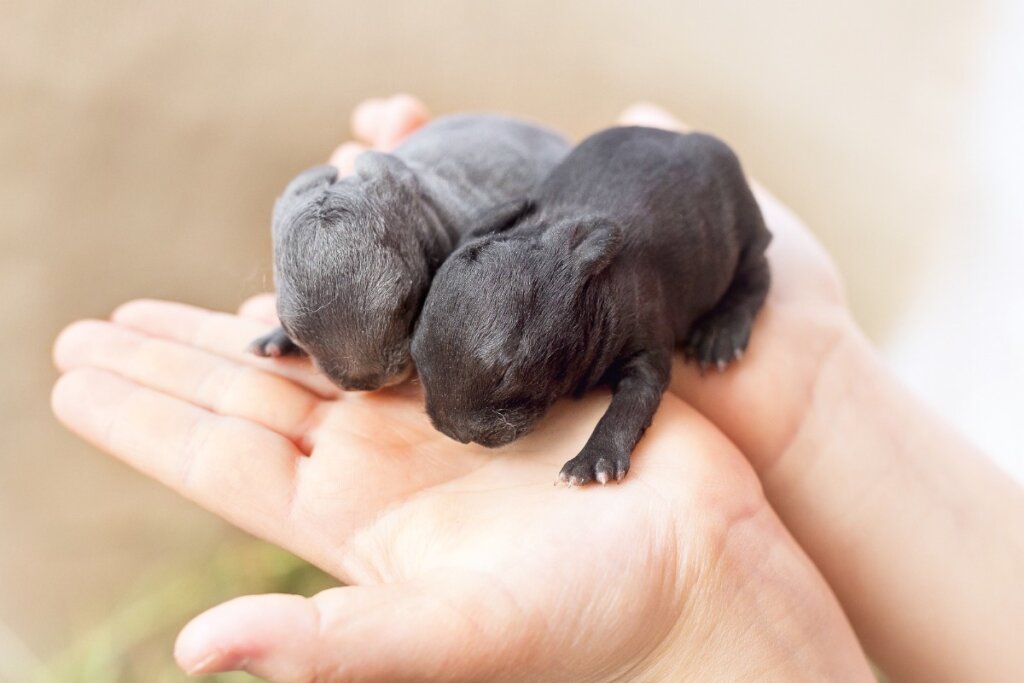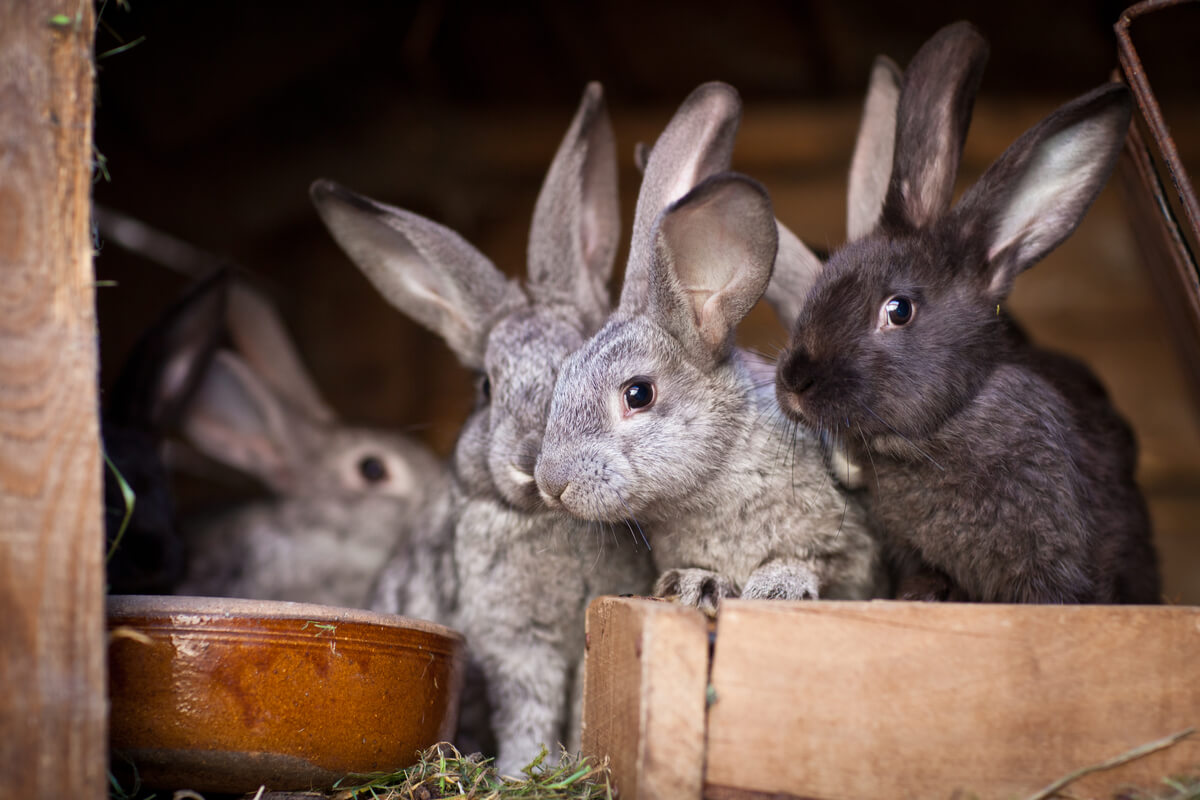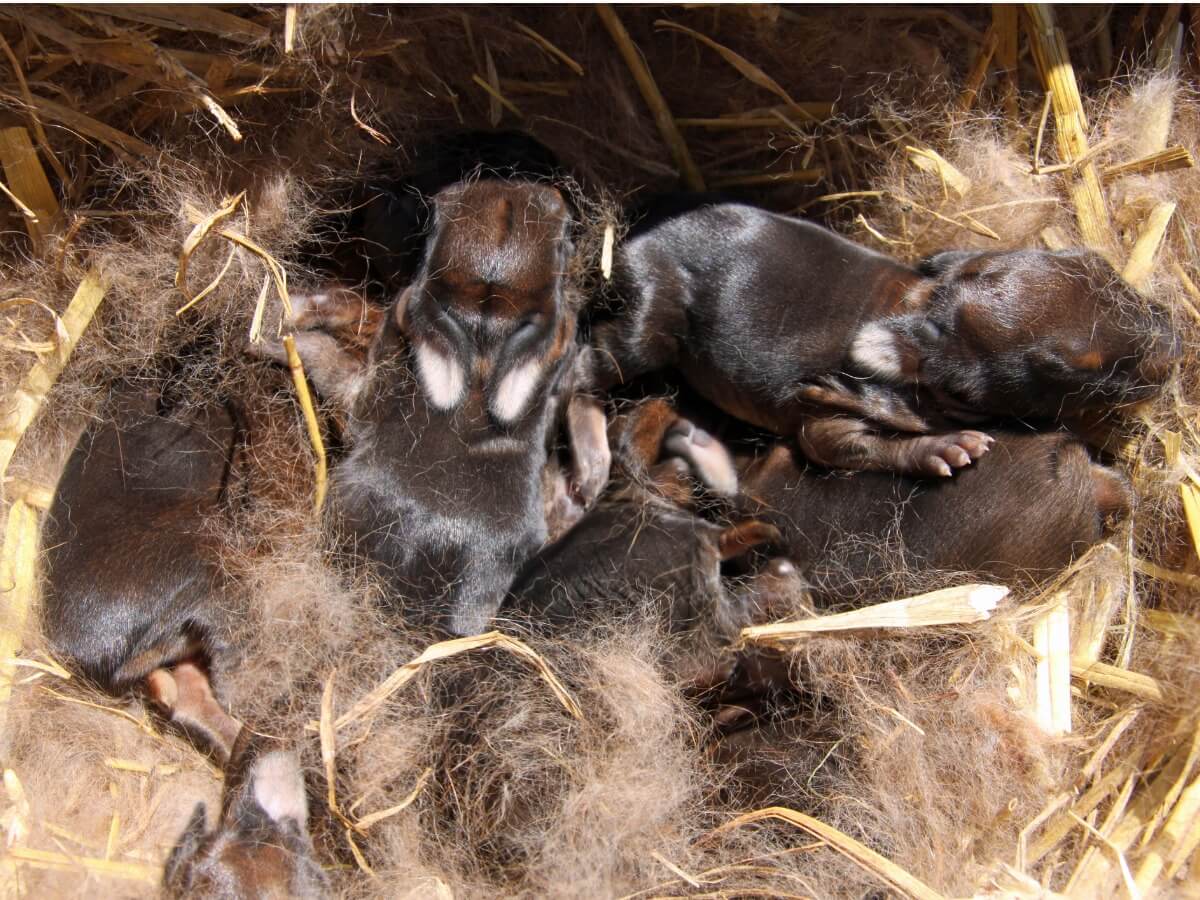How Are Rabbits Born?

Rabbits are adorable animals that enjoy an excellent reputation among the general public. However, not everyone knows too much about their reproduction. Here we’ll tell you how rabbits are born.
The breeding of rabbits is an important aspect in the economy of different countries. We need to know how these lagomorphs reproduce and are born in order to maximize their production, but also to keep them properly in captivity. Read on if you want to know more about this subject.
At what age do rabbits reproduce?
It’s estimated that an animal reaches adulthood when it has sexually matured. Maturity triggers the rabbits’ biological signal so that they’re able to reproduce and have offspring after a certain age. The reproduction of rabbits always starts before the first year of life but the time interval varies in each breed. This depends a lot on size:
- Small breeds: The rabbit will reach reproductive maturity at 4-5 months of age.
- Medium: 6-7 months of age.
- Large: From 9-12 months of age.

Rabbit fertility
When a doe has sexually matured, then factors such as the estrous cycle must be taken into account before breeding. This concept refers to the physiological process that the females undergo and which controls the times of fertility and infertility.
The estrous cycle is a biological regulator which allows us to calculate the time when the female will be most receptive and fertile. This process is subdivided into two stages: anestrus and estrous.
The key difference between the two is that anestrus is the period when the rabbit isn’t suitable for fertilization. It occurs during the first two and last two days of the estrous cycle. Estrous, on the other hand, is the opposite: it’s the fertile period when the female is receptive.
It isn’t only important to get to know the phases of the estrous cycle in rabbits, but also some details about mating. For example, the females can attack the males when they try to impregnate them. It has been observed that this doesn’t happen if it’s the female that goes to the male’s cage (and not vice versa).
The sexual act lasts only a few seconds and fertilization is internal.
Giving birth
After copulation and fertilization, the gestation period starts, during which the offspring develop inside the mother’s womb. Pregnancy lasts between 28 and 32 days. During this brief stage, the females are more docile and become fatigued earlier when carrying out physically demanding activities.
How long does the birth of a rabbit take?
Birth usually takes place at night and the females don’t need help to carry it out (as can occur with cows). As for the time it takes, it’s estimated to last between 15 and 30 minutes, depending on the size of the litter. The rabbits are born without much difficulty in groups of 4 to 12 offspring.
When should the offspring be separated?
Weaning is the process in which the rabbits are separated from the mother when they’re only a few weeks old and the suckling stage is finished. From this moment on, the young rabbits can only eat solid food. This event is important as it will influence the development of the young and their chances of survival.
As for the age at which weaning takes place, this usually depends on the reproductive rhythm established for the female. There are currently three different methods that allow you to decide whether or not lactation should continue:
- Traditional: Weaning takes place after 1 month and 5 days. This is considered to be late.
- Semi-early: The kittens (yes, baby rabbits are called kittens!) must be between 28 and 35 days old. This is the most commonly used parameter in the industry.
- Precocious: A period of 21 to 28 days of age is established, which is the earliest of all. In these cases, the females are exposed to intensive reproduction rhythms.
If weaning is early, it’s advisable to administer antibiotics with the feed, as the babies are prone to develop secondary infections due to possible immunosuppression. In addition, it’s recommended that the weight of the rabbits should be more than 350 grams (14 oz) for weaning (in order to minimize losses).
Postpartum care of rabbits
Once they’re born, the baby rabbits require care from both the mother and the owner/breeder. At home, it’s recommended to feed rabbits with maternal milk until the 18th day of life, but from the 19th day onwards hay and special fodder for newborn rabbits can be offered. Weaning takes place about 5 weeks after birth.
The rabbits should be kept in a warm, protected place, as it’s essential to avoid stress. If the cage has a temperature of 20°C (68° F) or more, it can be kept undisturbed, but if it gets too cold, a heating blanket should be placed outside the cage. These small animals are prone to hypothermia.
Curiosities about the birth of rabbits
Not only is the reproductive stage interesting, because the newborn rabbits (called kittens) show curious characteristics too. These are related to the number of offspring as well as the behavior of the female. We’ll tell you about some of the most relevant ones:
- The kittens only ingest mother’s milk every 24 hours.
- The first 10 days are crucial for the survival of the young.
- The rabbits are born with their eyes closed and with hardly any hair. They must be close to the mother and all together to keep warm.
- If a female has a litter of more than 9 kittens, some of them are fed by other females with smaller litters.

In summary, rabbit breeding is a process that begins with rabbit reproduction and also encompasses breeding and fattening. Nowadays there are protocols that control all the details, as it’s necessary to ensure the well-being of both the rabbits and the mother during the whole process.
All cited sources were thoroughly reviewed by our team to ensure their quality, reliability, currency, and validity. The bibliography of this article was considered reliable and of academic or scientific accuracy.
- ORGANIZACIÓN DE LAS NACIONES UNIDAS PARA LA AGRICULTURA Y LA ALIMENTACIÓN. (1996). El conejo – Cría y Patología. https://www.fao.org/3/t1690s/t1690s.pdf
- González Redondo, P. (2004, 14 marzo). Lactancia y destete de los gazapos. Taller de Cunicultura. http://alojamientos.us.es/gprodanim/PCA/Destete.pdf
- Manual de Cunicultura. (2021). Instituto Nacional de Desarrollo Social, Gobierno de México. http://indesol.gob.mx/cedoc/pdf/III.%20Desarrollo%20Social/Cr%C3%ADa%20de%20Animales/Manual%20de%20Cunicultura.pdf